 |
|||||||||||||||||||||||
| Home | |||||||||||||||||||||||
|
The evidence of the evolution of the human brain can be found in its anatomical structure. This makes looking inside the human brain like gazing into a living fossil! This is truly an exciting time for neuroscientists, many of whom have made discoveries which will impact our lives and future like never before.
Based on these new discoveries the primary question neuroscientists are now asking is, "what is the brain really for?" and "what is the brain really designed to do?" Let's take a look at what neuroscientists have been studying. |
|||||||||||||||||||||||
|
The human brain has many parts and each has a specific function. Each of our brains is unique and is ever changing and sensitive to its environment. Its modules are interdependent and interactive and their functions are not totally fixed. This system is so complex, that it may never succeed in comprehending itself, yet it continues to try. For details of each specific part, click on illustration. |
|||||||||||||||||||||||
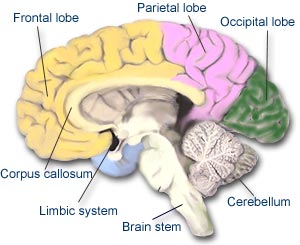 |
|||||||||||||||||||||||
|
The two hemispheres of the brain are covered by a thin skin of deeply wrinkled tissue called the Cerebral Cortex. Each bulge of this tissue is called the Gyrus, and each infold is called the Sulcus. The outside leathery covering of the brain is called the Dura. The surface of each individual's brain is different, but the main wrinkles are common to all. |
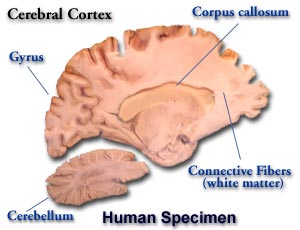 |
||||||||||||||||||||||
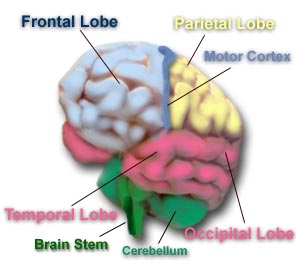 |
Each half of the cerebrum is divided into four parts, the Frontal lobe, Parietal lobe, Occipital lobe and Temporal lobe. The Frontal cortex is the part that mushroomed most dramatically during our transition from hominid to human and it makes up about 28% of the cortical area of the human brain, a far larger proportion than any other animal. For details of each specific part, click on illustration. |
||||||||||||||||||||||
|
The modules that lie beneath the corpus callosum are known as the limbic system. This area is older then the cortex in evolutionary terms and is also known as the mammalian brain because it is thought to have first emerged in mammals. This part of the brain, and even that below it, is unconscious, and yet has a profound affect on our experience because it is densely connected to the conscious cortex above it and constantly feeds information upwards. For details of each specific part, click on illustration. |
|||||||||||||||||||||||
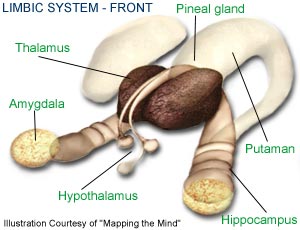 |
|||||||||||||||||||||||
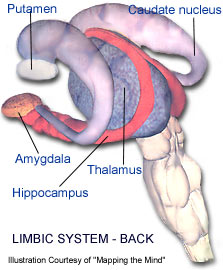 |
|||||||||||||||||||||||
|
Emotions, our most basic cerebral reactions, are generated in the Limbic system along with the many appetites and urges that help us behave in such a way to survive. For instance, the Amygdala, is the place where fear is registered and generated. For details of each specific part, click on illustration. |
|||||||||||||||||||||||
|
The brain stem part of the brain, is the most ancient -- it evolved 500 million years ago and is more like the entire brain of present-day reptiles. For this reason, it is often called the reptilian brain. Various clumps of cells in the brain stem determine the brain's general level of alertness and regulate the vegetative processes of the body such as breathing and heartbeat. For details of each specific part, click on illustration. |
|||||||||||||||||||||||
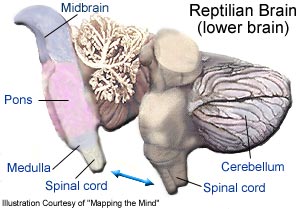 |
|||||||||||||||||||||||
|
"Mapping the Mind", Rita Carter Weidenfeld & Nicolson, 1998 |
|||||||||||||||||||||||
 |
|||||||||||||||||||||||